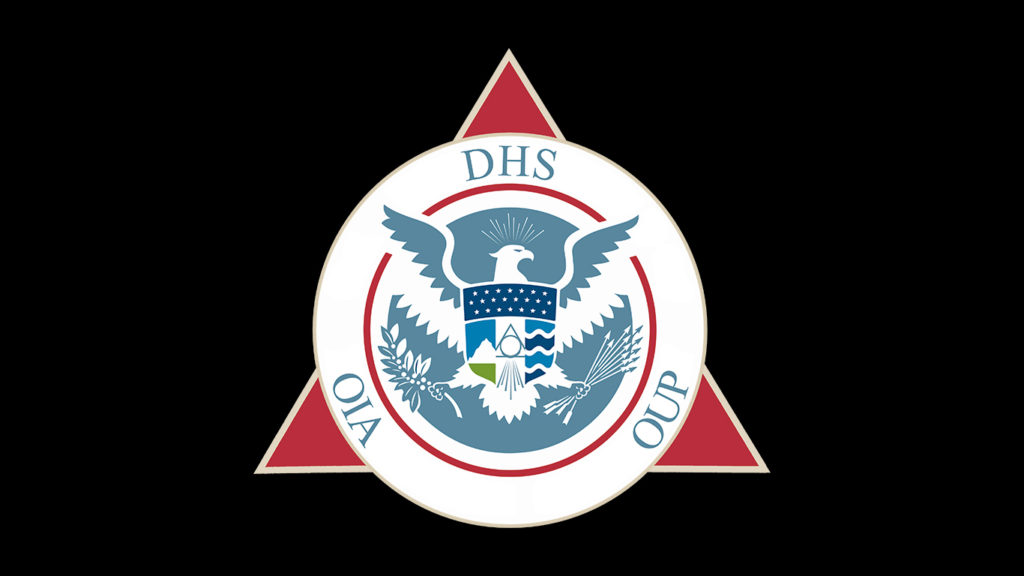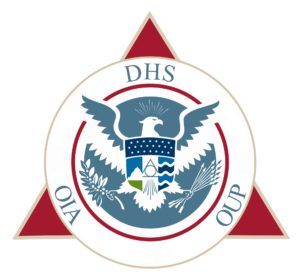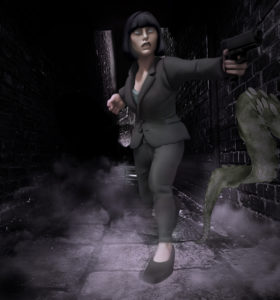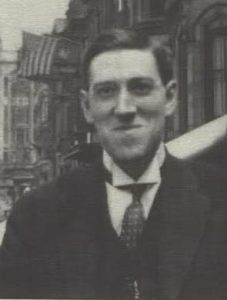
The other week someone asked me about the symbolism behind the emblem of the Office of Unidentified Phenomena (OUP). The fictional agency for which my paranormal investigator Pierce Mostyn works to save America and the world from those things that make big bumps in the night. It’s a good question, because the design wasn’t haphazard.
The creator of the design was none other than Crispian Thurlborn, who is no stranger to you if you are a reader of this blog. He’s a fabulous writer. In addition, he’s a superb book cover designer, and trailer maker. He designed all of the promo materials I use for the Pierce Mostyn Paranormal Investigation books.
So what does all that stuff on the above emblem mean? Let’s take a look at the symbolism.
The red triangle on which the circle is placed represents the depth of the OUP. It is in the background of our daily lives and it’s reach is very deep. It is behind everything.
The shield covering the eagle’s body represents defense in the air (the stars), on the land (the mountain), and on the sea (the waves). There is also a Lovecraftian dimension to those three aspects in addition to the normal heraldic symbolism. The OUP protects us from all things deep under the sea (where Cthulhu sleeps), in space and beyond (where the Great Old Ones originated), and under the earth (where Tsathoggua sleeps).
The all-seeing eye in the pyramid on the shield symbolizes the ever vigilant nature of the OUP.
The eagle itself is a bird of prey, but has for a very long time symbolized nobility, strength, and bravery. The wings in the displayed position symbolize protection. And the rays, or rayonnee emanating from the eagle’s head symbolize intelligence and enlightenment.
The olive branch and the arrows show that all of the traits are present in both peace and war.
And now to the eagle’s head. Why is it facing to the eagle’s left? If you notice any symbolism which uses an eagle the head is usually turned to the eagle’s right. The right hand symbolizing honor and nobility. At least most of the time.
But what does it mean when the head faces to the left? That is an excellent question. Our word “sinister” comes from the Latin word for left. Hm. Gives one pause to think, doesn’t it?
Does the eagle’s head facing left mean the OUP is a sinister organization, one that actually doesn’t do good? Well, the eagle on the US President’s seal faced left until President Truman changed it to the right. More food for thought.
For the OUP, the left facing eagle symbolizes the fine line the agency walks in protecting us from that of which we aren’t aware. The all-seeing eye, the rays of enlightenment and intelligence, and the sinister facing eagle together imply the danger of the OUP’s mission and methodology and the wisdom needed to thread a very fine needle, or walk a very fine line.
It is a case of fighting fire with fire. Of fighting the forces of darkness with darkness. Of using the two-edged sword which can cut both ways. Fighting evil by frequently having to resort to using evil.
All of this is, of course, perfectly in line with the Lovecraftian base underlying the Pierce Mostyn stories.
The Great Old Ones, while appearing evil to us because they mean the end of the world as we know it, are not intrinsically evil. They simply exist as we exist. They appear evil to us because they are unlike us and appear to be at cross purposes with us. They are aliens, foreigners to our universe. And by nature we tend to feel uncomfortable with what we do not know or understand. But perhaps most damning from our perspective is that we are to them as ants are to us. Nothing. A mere nuisance.
If ants bug us, we exterminate them. The same with the Great Old Ones. To them we are pests.
For Lovecraft, human beings are not the apex of all creation. We are essentially nothing in the face of the great cosmos. We are a highly developed primate, having evolved on a tiny speck of rock and dirt, orbiting a star of no particular significance. Our position in the universe is so infinitesimally tiny, we are in essence insignificant.
Prior to Lovecraft, Nietzsche posited our essential meaninglessness. He cites, in The Birth of Tragedy, the story of Midas and Silenus. Midas asks the god what is the best thing for us. And Silenus answers him by saying that the best thing for us humans is to never be born. Otherwise our best course is to die soon.
Nietzsche goes on to posit that when we gaze into the deep black abyss and come away knowing our insignificance, our meaninglessness, our essential lack of any objective purpose — it is then the words of Silenus come home to us.
However, Nietzsche didn’t leave us in the depths of despair and nihilism. It is why he advocated we must create our own purpose. We are the creators. We are the gods. Not the beings we fashioned in our own image. We must embrace our senses and emotions, we must resort to art to find our own meaning and purpose. If left to our rational nature alone, we will sink into despair. We will go insane.
The Great Old Ones are not rational by our standards, which is perhaps why so many go insane immediately upon seeing them.
Dr Rafe Bardon, the OUP’s director, and Pierce Mostyn have gazed into the abyss and survived. They realize that the eagle facing to the right will not save the planet from the roiling insane chaos (at least by our standards) threatening to over take it.
Only by facing the sinister is there any hope for survival.
Stop by this Friday for the fourth installment of The Medusa Ritual. Lovecraftian adventure coming your way, as Pierce Mostyn and the OUP battle a nemesis hellbent on opening the gate for the Great Old Ones.
Comments are always welcome! And until next time, happy reading!
Share This!

